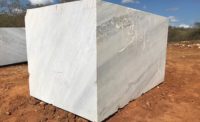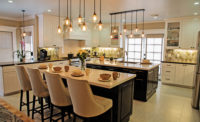Welcome to Part I of a three-part seriesof articles which will methodically dive deeply into “porcelain,” now known as mineral surfacing -- the latest premium decorative surfacing boom. This first segment will address key and lingering questions regarding the category, move into some examples of direct responses by manufacturers to some of these “headwinds” and Part I will conclude with thoughts on how and why this is such a sustainable category and how substantial growth will continue to steadily unfold. Parts II & III, released in consecutive months from here, will address fabricator strategies, strategic planning, definitions and debunking, and much more that will help frame out how and why being proactive is wise. Let’s begin the deep dive…
There are those who pine for innovation and seek to be early adopters; and then, there are those who look to wait, let Gen 1+ launch and have the market “debug” the major glitches and then see where, how and IF this innovation should be adopted in their business. Today, fabricators remain faced with this conundrum when evaluating mineral surfacing (formerly and generically called, “porcelain”) countertops; a category that is now experiencing some significant, and what I forecast as, sustainable growth.
Some serious questions loom, however, about:
- How does it strategically fit into a fabricator’s surfacing portfolio mix?
- What are the main value propositions and are they commensurate with the price?
- What are the differences amongst the various brands?
- What’s the difference between sintered, porcelain, ultra-compact and pyrolithic?
- What are best practices in handling, fabrication and installation?
- Is this an indoor or outdoor, horizontal or vertical, residential or commercial product?
- If the material gauge and/or density require slower cutting and potentially mitered edges, how does a fabricator factor opportunity cost and risk into the pricing formula?
- Where to focus? Thinner digital printing materials or thicker full-body materials?
I will try to put all this into a simple current-day perspective and offer some options on how to strategically adopt this unfolding trend.
It was 2019 and I was commissioned by a large building materials entity to do a thorough market research on the porcelain category in the U.S. whose findings would have served as the basis to invest (or not) in a manufacturing operation and subsequent brand creation and global distribution. In short, after scouring 11 different distinct markets in the U.S. over a nine-month period, the results were rather similar. From a 30,000-foot view, all markets showed genuine interest yet interest that was muddled with profitability concerns, category and nomenclature confusion, trepidation, ignorance, uncertainty and the old, “I’ll do it if a job comes along, but I am not pushing it,” mentality.
Zoom ahead to current day, and we see both, less reservation and apositively evolving category; one that has done a very good job at addressing the fabricator’s major concerns around how to handle and fabricate mineral surfacing. For most major material, machine and tooling manufacturers have since come up with solutions to mitigate fabrication “issues,” such as stress fractures, fabrication conversion time, edging, chipping, material handling breakage and even installation procedures. These issues address the very heart of WHY a Fabricator will be tentative about adopting and potentially, “pushing” a certain category or brand.
I had the privilege to speak with one of the most experienced sales consultants in the industry, Jim Callaghan from GranQuartz, and asked how has he and Grand Quartz responded to the mass trepidation of fabricators to more fully embrace the mineral surfacing category. Callaghan, and quite proudly so, shared their three-pronged strategy: Education & Training, Material Handling and Cutting. Also serving as a Board Member of ISFA (International Surfacing Fabricator Association), he plays an active role in educating and training his national base of fabricators.
“It all starts with education and training,” said Callaghan. “Until the fabricator understands what mineral surfacing can do, all processes of fabrication and how to handle and install it, they will tend to stay on the sidelines and stick with what they feel comfortable. There is a high correlation between comfort level and profitably; raise one and you raise the other. That’s our mission.”
Callaghan shared with me several solutions GranQuartz has for fabricators and mineral surfacing and wanted to highlight a couple here. To start, as a response to the fabricator’s profound reluctance to cut and handle mineral surfacing, GranQuartz extensively researched and brought this targeted solution to market - the Slim Slab Handler™ (aka, the S3).
The S3 is a highly utilitarian rigid frame and reinforcement customizable system, designed to reduce strain and risk of injury while handling mineral surfacing. The other major element it affords is mitigating risk of breakage during transport and installation of mineral surfacing. In one item, many concerns are addressed serving to assuage fears, afford confidence and provide safety.
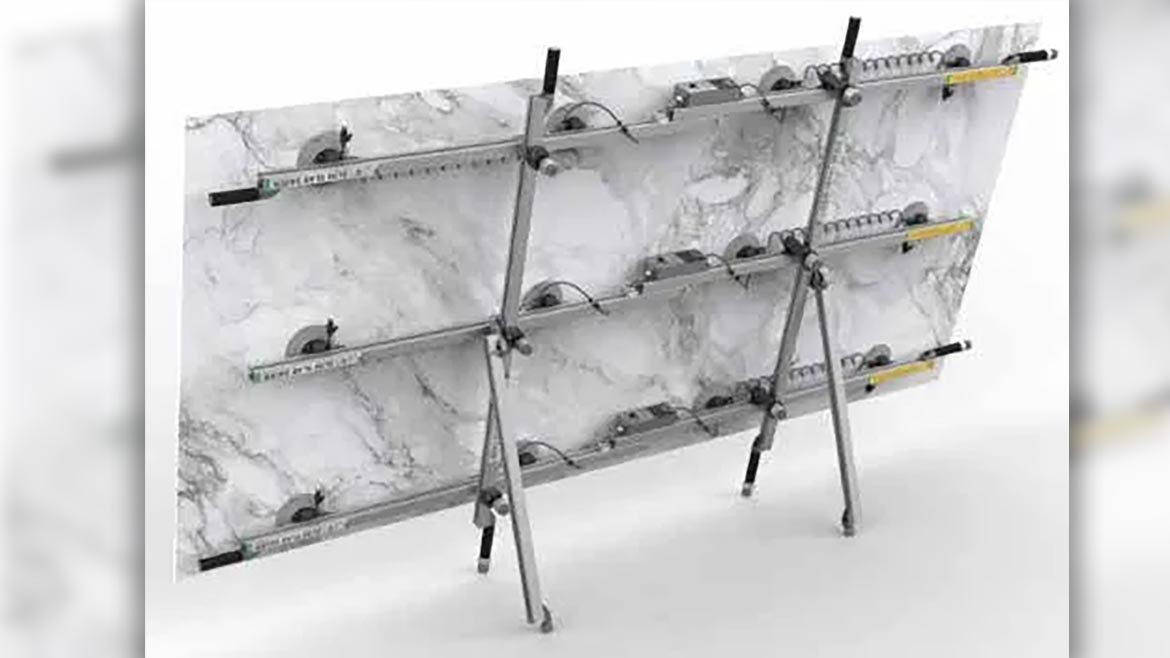
Manufacturers have developed equipment to make handling mineral surfacing easier, such as the S3 blade. Photo courtesy of GranQuartz
Callaghan then shared that GranQuartz also focused on responding to the fabricator’s trepidation about cutting and mitering mineral surfacing. As a result, they introduced the the ADI Ratio Blade. The model, A 14” features a heavy-duty core that minimizes deflection during straight or miter cutting applications. The diamond bond and smooth diamond segments were specifically designed for extra hard materials, like mineral surfacing.
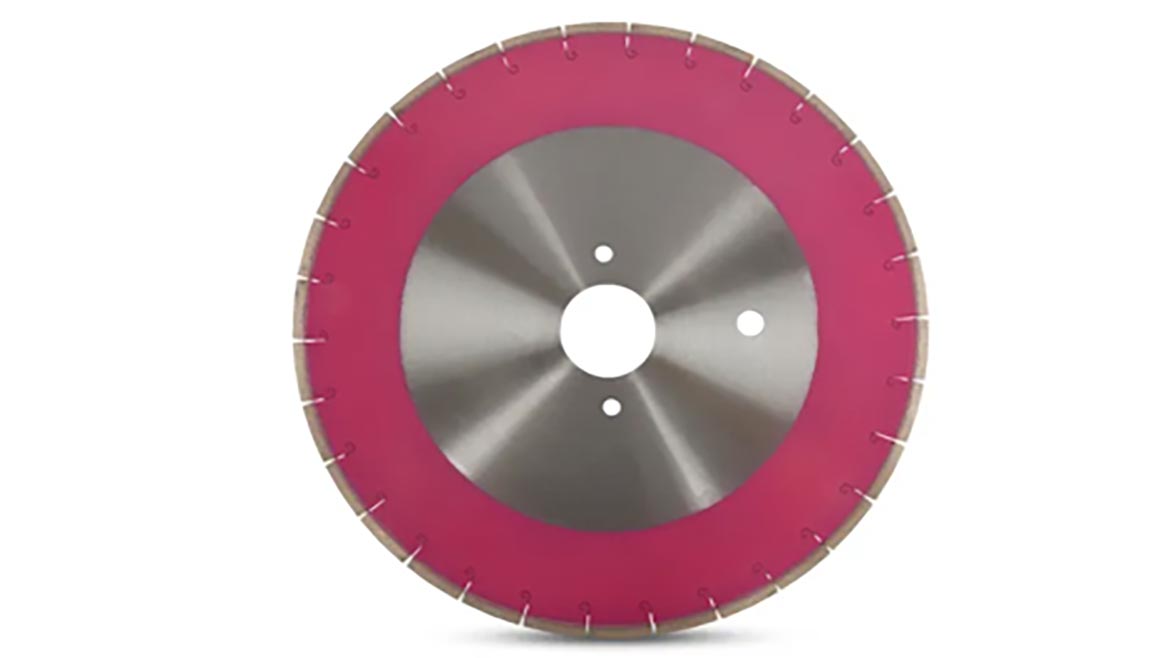
The ADI Radio Blade is among those designed to assist in the cutting of mineral surfacing. Photo courtesy of GranQuartz
What can be tricky, however, is since mineral surfacing has glass-like properties due to the sintering process, the material can be relatively quite delicate; i.e., more prone to chipping when cutting/mitering without the proper equipment and technique. Failures at this most critical juncture in fabrication can be enormously costly! Hence, the solutions provided here are just a few amongst many that have targeted fabricator health and profitability safety.
I experienced first-hand the early growth of both solid surface and quartz, and the one commonality of their launches was the willingness of manufacturers to “ease the pain” of fabricators; proactively cooperating to embrace the category. The subsequent massive success of both are in some form tied into this early teamwork. I am convinced, it is compulsory for manufacturers to embrace their “infantry,” the fabricator. The fabricator is on the front line and needs all the tools, resources and knowledge to expedite category proliferation. When left unattended, fabricators will distance themselves from a brand or category (as I witnessed in 2019 in my research) and yet, when set up to win (e.g., education, resources, solutions, service, leads), will be any manufacturers best ally. (As we saw with solid surface and quartz.)
“GOLDEN” BRICKS TO BEHOLD THE PROMISE
As we peer out the 2022 and 2023 windows, we in fact see much more attention to the fabricator with myriad responses to their justified trepidation. It has been, and remains, my belief that this category will experience sustainable strong growth for several years to come. This is based on the following:
- The market is still learning of its value propositions and will continue to embrace it.
- The product offers some real competitive benefits as well as presents more viable options in some uses/installations. It also opens many new doors for end uses.
- Mineral surfacing (large-format) is relatively new and newness is attractive to many when trying to differentiate the kitchen and bath remodels.
- Mineral surfacing is an incredible option/opportunity for exterior and vertical surfacing.
- Average market pricing is in line with value. Also, I believe this category will move to maturity relatively much faster than its predecessors of solid surface and quartz.
- Strong companies are behind the product development. Manufacturers we see today offering the more common brands are already surfacing experts and have sound investments in production and quality control, and if not already secured, working diligently at their national infrastructure to ensure a high level of service.
- Advertising and promotion is steadily increasing from both manufacturers and distributors to drive demand. As evidence, look at the rapidly growing number of companies and brands representing their mineral surfacing at KBIS, Coverings and TISE.
- Digital printing affords a user to have a very high-end look for a fraction of the real cost and where the real material may not have even been a viable option. Example: a building facade can be cladded in a large-format Nero Portoro (deep rich black with real gold veins) marble-look at a small fraction of what it would cost using the real thing and…. each slab used would look like be the finest “A” grade material, only devoid of color and pattern mutations that often occur with more couture materials.
Case in point: Can you tell the difference between which is the real 2cm marble slab and which is a large-format porcelain?
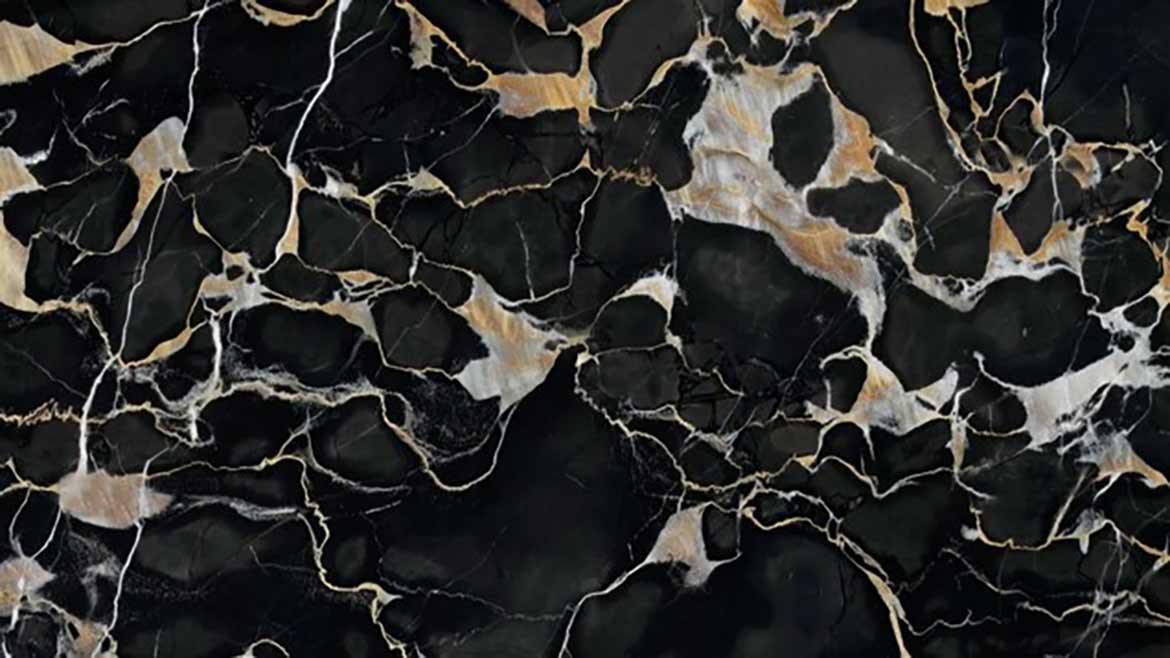
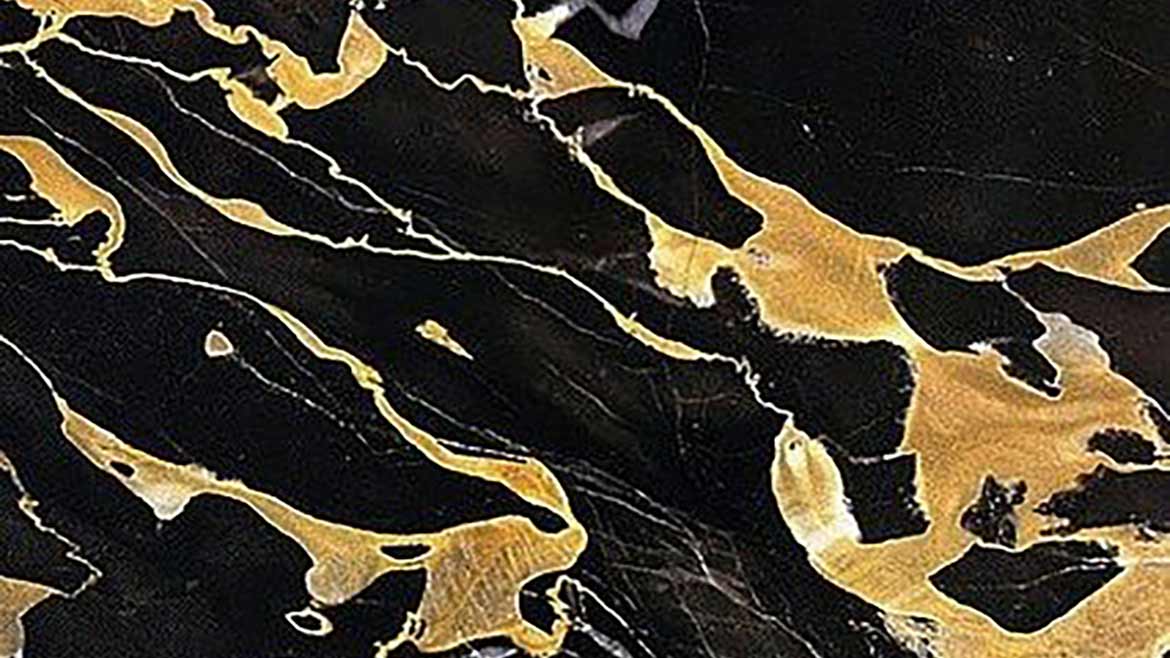
Advances in technology often make it difficult to determine which is a natural stone and which is mineral surfacing. Photos courtesy of Max La Pera & MarbleGuide.com
Real gold embedded in dark rich marble is both beautiful and scarce -- making the price very dear. A digital picture of this aesthetic put on a thinner core of minerals is effectively no more expensive than any other aesthetic, hence, an inordinately less expensive option with arguable more durable performance (depending on the application) at a fraction of the real cost. THAT is a multi-win for designers and specifiers, and all those who will enjoy the fruits of this dynamic.
Assimilating all above, adopting a more pro-active look at the category is wise and learning best practices regarding fabrication and installation is KEY to moderate a smoother entry into the category.
Consider also, embracing mineral surfacing can open up a myriad of opportunities to gain more square footage of fabrication and installation in a given space, as well as serve to “not lose a job because of your fear and or ignorance.” Using large format can eliminate annoying grout lines and give a very elegant and sleek look to any install whether it is bath/shower panels, wainscoting, wall panels, column or facade cladding, for examples.
In addition, remember that notevery material is the BEST choice for every application. You can be offering a tremendous service to your clients by designing spaces using multiple materials, and each one used in an application that best fits its properties. For example, solid surface arguably remains the best overall option for healthcare applications (seamless, hygienic, etc.). So where sanitation is a focal point use a seamless solid surface, while with a quartz or natural stone transaction top for aesthetic POP! And use a mineral surface vertical cladding in a room or desk area, or for that matter, cladding a complete fireplace surround. You can design anything you like, but the BEST way to incorporate multiple materials in a given space is to use them commensurate with their greatest attributes – this is exactly how you can now strategically include and healthily offer multiple different materials minimizing spatial cannibalism.
New product/category launches are typically bumpy, awkward and costly for all; mineral surfacing certainly is no exception. However, given the strong value proposition mineral surfacing affords, almost by default, it will proliferate. This proliferation and the ease or pain within will be dictated by how and to the degree to which manufacturer’s educate, train and promote. In just a few years, we have seen myriad reservations by fabricators be assuaged, category education and promotion expand and solutions offered to facilitate a smoother and less costly pathway to larger-scale adoption. We have set the stage here for a great foundation finally being laid; and yet, Part II, next month, will address the challenges and confusion that can mitigate growth again, as now starts the race for brand and product differentiation and how this conundrum could affect your business.


